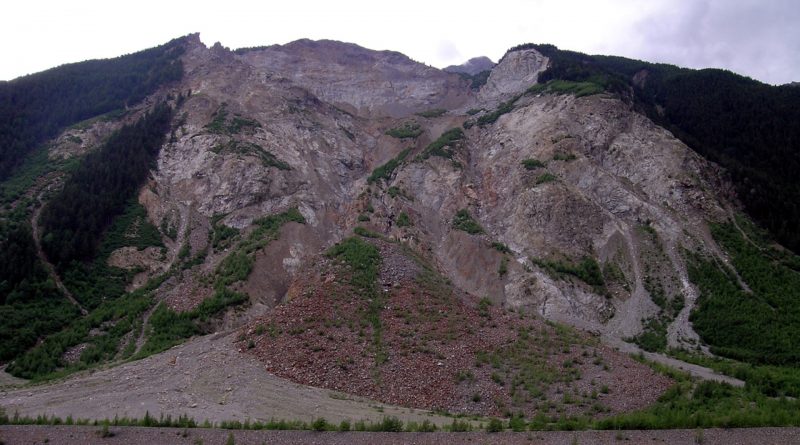Chemistry in soils and hydrogeological instability
Chemistry in soils and hydrogeological instability
In recent years, and with a worrying and frightening progression of events, we are witnessing a phenomenon which, in addition to alarming us due to its catastrophic nature, has caused and unfortunately will continue to cause mourning, suffering and pain.
The reasons that are leading to this state of affairs are multiple and often interrelated.
Almost always due to speculation and political profiteering, fingers are pointed at some aspects, sometimes emphasizing them but almost never taking concrete measures or solutions.
The political objective of the European and world ruling class (ignoring the Italian one out of modesty) is almost never in the direction of “homeopathic” solutions but almost always in that of temporary interventions, such as patients who use an analgesic to soothe a headache without going to treat the real cause of the symptom.
Hydrogeological instability is a multifunctional phenomenon at the base of which one of the triggering events is irrational anthropic intervention.
Meteorological conditions and climate variations are only a marginal cause of hydrogeological instability. The origins of the phenomenon are in fact anthropic in nature. Among the first is excessive land consumption, combined with practices such as overbuilding and the consequent deforestation.
Over the last 50 years, the loss of soil (both in terms of suitable surfaces and in terms of solid transport) has seen the subtraction of a surface that is estimated to be over 30% of the original agro-forestry surface, considered stable over the last 10,000 years. .
This data, which is alarming in itself and on which Governments should focus to find suitable solutions, is generated by a short-sighted and irresponsible “land use” model. Without too many mincing words, our children will have 30% less surface area (to date) to feed themselves and live on.
Among those most responsible for this phenomenon we include, in this contribution, one who often takes second place, so as not to be totally overlooked in many cases.
I am referring to the salinisation* of soils and the simultaneous loss of organic substance.
These two phenomena are highly correlated and linked to an irrational use of irrigation water and chemical fertilizers. If on the one hand these techniques lead to an apparent increase in fertility (greater instantaneous production) on the other (already in the short term) they cause a decrease in organic substance (due to a series of phenomena of physico-chemical and biological origin).
The joint action of soil salinisation and the reduction of organic substance is increasingly leading (and not only in arid regions) to a loss of the physical and mechanical characteristics of soils, making them very vulnerable and not very resistant to atmospheric stresses (rain and winds).
In the phenomenon of salinisation, in addition to the irrational use of water (often qualitatively unsuitable for irrigation use), the use of chemical “fertilizers” and pesticides which cause a joint action of exponential increase in the salinity of the soils and their biological drying**.
The apparent increase in soil fertility and agricultural production (with these technologies) is an impressive boomerang that requires increasingly “aggressive” varieties and chemical fertilizers.
By relying on this lack of information, the chemical and DNA multinationals are pushing in the direction of GMOs and increasingly selective pesticides, creating an unprecedented ecological, territorial, environmental and human catastrophe.
In a hypothetical courtroom of an International Tribunal, the defenseless citizens (often uninformed and inattentive) should sit on one side and the Multinationals of Death and compliant Governments on the other; the Judge of this court will be History but the sentence now seems obvious to me.
Guido Bissanti
Bibliography –
AA.VV. (2009) – Sustainable agriculture and soil conservation – Soil degradation processes – Information sheet n. 4 – European Soil Portal – Soil Data and Information Systems.
Bissanti G. (1999) – Rural Development and Political Renaissance – Nuova Ipsa Editore – Palermo.
Scesi L., Papini M., Gattinoni P. (2003) – Hydrogeological risk in Applied Geology – Casa Editrice Ambrosiana – Milan.
Gisotti G. (2012) – Hydrogeological instability. Risk prediction, prevention and mitigation – Dario Flaccovio Editore – Palermo.
Napoli R., Vanino S. (2011) – Assessment of the risk of soil salinisation and marine intrusion in the coastal areas of the Southern regions in relation to irrigation uses – INEA – Rome.
* In agriculture, accumulation of salts (chlorides, carbonates, sulphates) in the soil in such quantities as to make it unsuitable for crops.
** This phenomenon is at the basis of the microbiological decrease, with consequent loss of the mechanical (as well as biological) characteristics of the soil.

